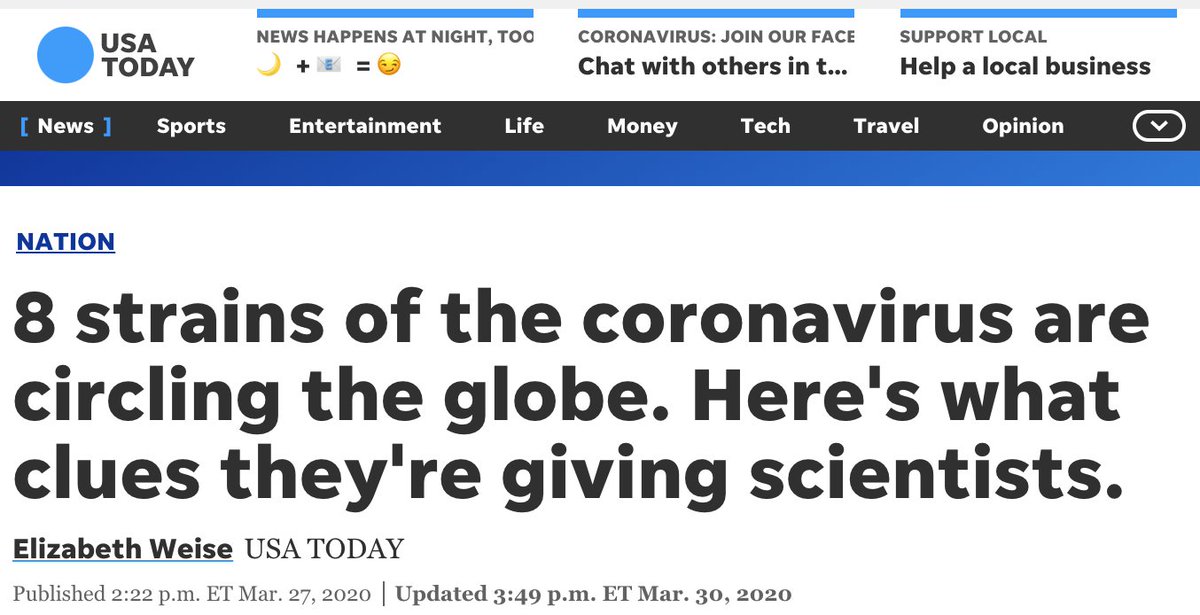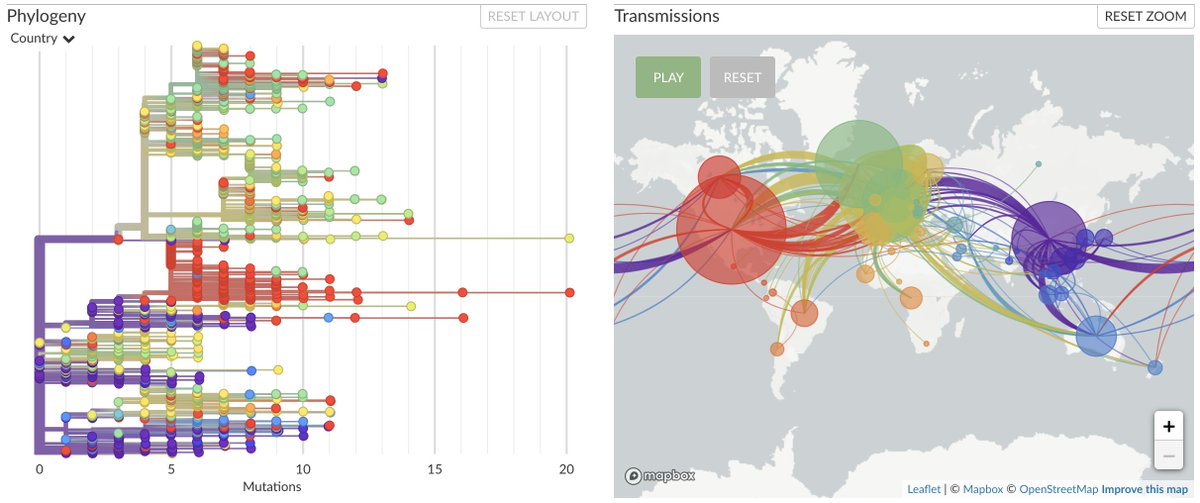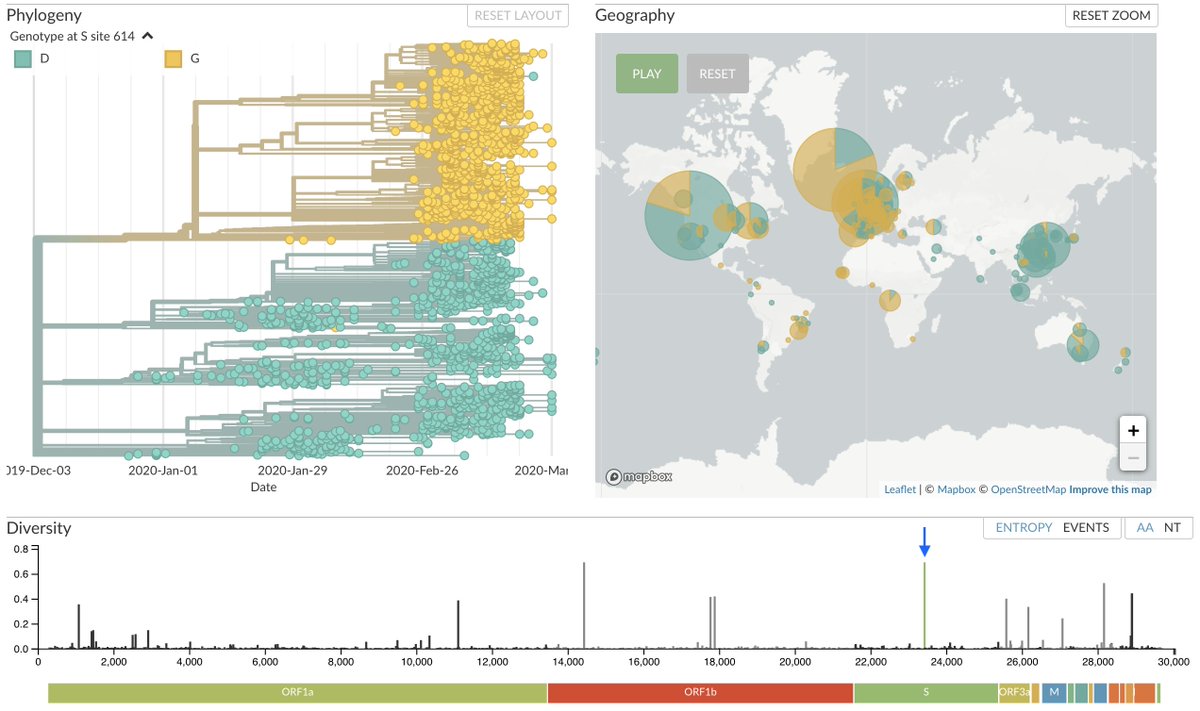This article by @USATODAY misleadingly states that there are "8 strains of coronavirus" circulating. Because of this our @nextstrain inbox is today full of questions like "if you get one strain of Covid-19 and recover, do you have immunity to the other seven?". 1/13
There are important and somewhat subtle distinctions between "strain" and "mutation" as I& #39;ve discussed a bit previously. This thread won& #39;t be much different actually. https://twitter.com/trvrb/status/1242628551557316608">https://twitter.com/trvrb/sta... 2/13
"Strain" is unfortunately an overloaded scientific term. In many circumstances every unique viral genome will be counted as a separate strain. If we use this criteria then we& #39;ve seen 1150 "strains" out of 2243 #SARSCoV2 genomes currently up at https://nextstrain.org/ncov .">https://nextstrain.org/ncov"... 3/13
Ie roughly every other virus sequenced reveals a slightly different genome. This is due to constant barrage of mutations that occur in an RNA virus due to error-prone replication. Along a transmission chain, we expect a new mutation every ~2 weeks. 4/13
However, because there are so many parallel transmission chains sparked from the initial outbreak in Wuhan the different mutations that we& #39;ve observed are all slight variations to this original Wuhan virus. 5/13
Sampled viruses differ from the original Wuhan outbreak virus by only 0 to ~20 mutations. Almost all of these mutations will do very little to affect viral function. 6/13
This brings us to the other overloaded definition of strain: a functionally distinct virus genotype. 7/13
What& #39;s very tricky is that we can& #39;t know without doing experiments if one genetic variant behaves differently than another, especially when there& #39;s only a small handful of genetic changes between them. 8/13
Mutations can occur that change the proteins made by the virus and other mutations can occur that change the genome but not the proteins. This is due to the degeneracy of the genetic code ( #Degeneracy">https://en.wikipedia.org/wiki/Genetic_code #Degeneracy).">https://en.wikipedia.org/wiki/Gene... 9/13
There have been only 11 mutations to proteins that are widely distributed. These are *potentially* functionally distinct variants that deserve attention and experimental and clinical follow up. But my expectation would be most have "little effect" without further data. 10/13
Finally to the initial question at the top of the thread, in terms of immunity, there is a single widely circulating mutation in spike protein (D614G). Spike is present on the surface of the virus and is what the immune system sees. 11/13
My expectations from influenza, norovirus and other antigenically variable viruses is that a single mutation outside the receptor binding site is unlikely to have much of an effect on immunity. 12/13
However, this could be studied via cross-neutralization assays to see if sera from recovered individuals respond differently to these two variants. These assays are routinely used in influenza vaccine strain selection for exactly this purpose. 13/13

 Read on Twitter
Read on Twitter





